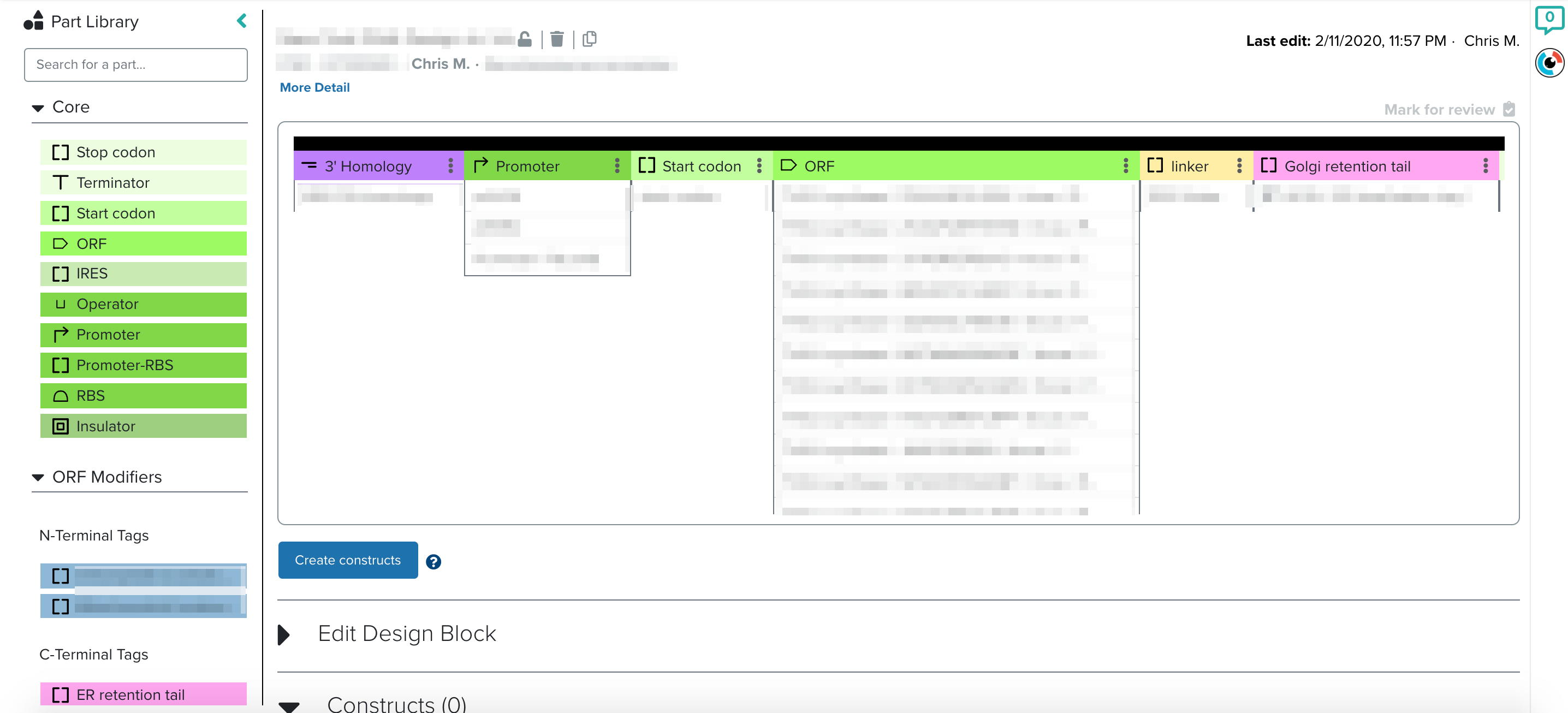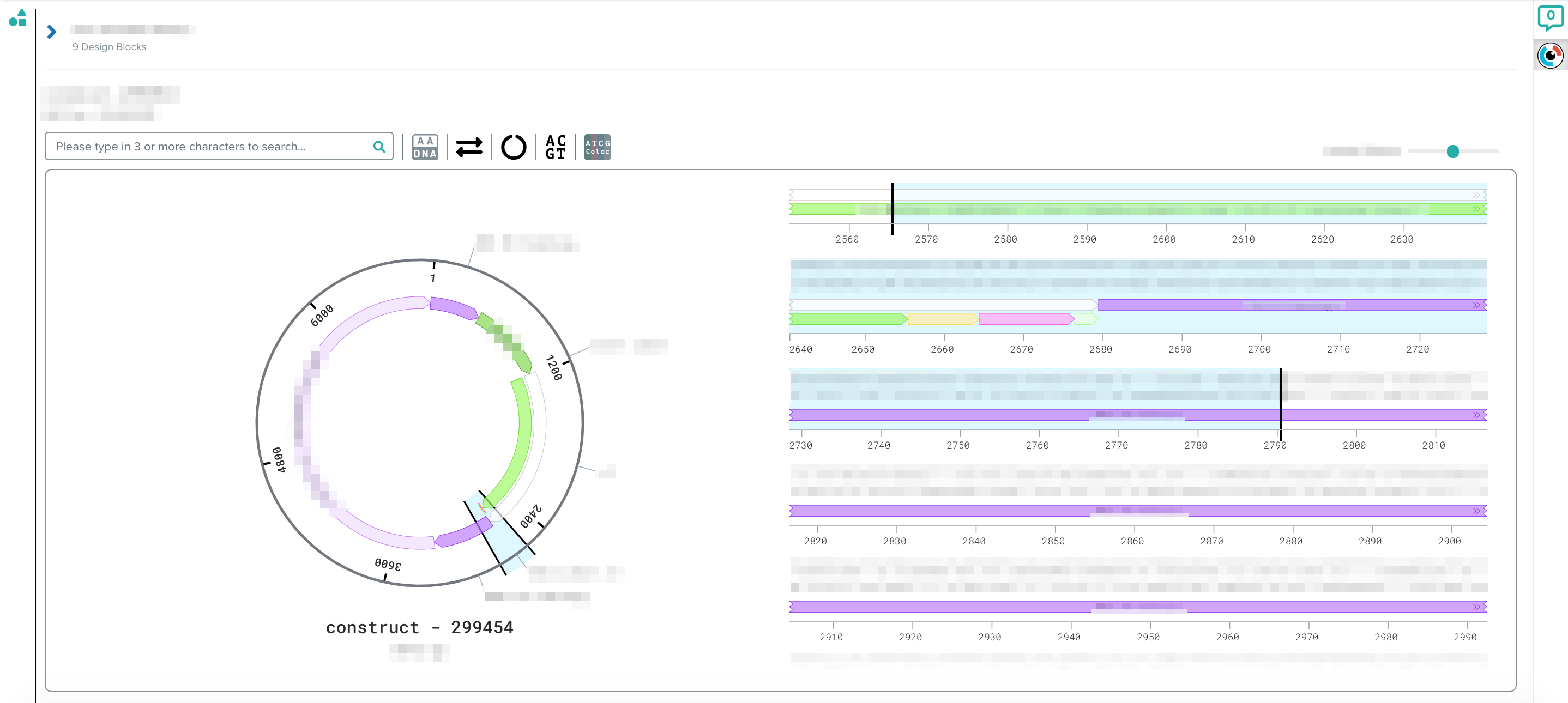At Ginkgo, our mission to make biology easier to engineer constantly challenges our software team to develop innovative solutions that drive us forward. One of the questions we have focused on recently is ‘How can we make the process of designing DNA more efficient?’
To address this challenge, our new DNA design platform was built with the goal of both enabling large scale design and quick iterations on biological hypotheses. However, to keep up with Ginkgo’s pace of scaling the design of new organisms, we need to consider all software solutions, including leveraging open source technologies. In this instance, Lattice Automation’s open source sequence viewer, SeqViz, was an excellent option for our users’ needs and accelerating our development timeline.
DNA design software challenges
To optimize the engineered functions of new organisms, Ginkgo’s biologists must explore a diverse design space and create libraries with many variants or homologs of an existing target. The goal of our new DNA design platform is to streamline how biologists design these large DNA libraries. This process involves mixing and matching many different kinds of parts in a combinatorial manner, enabling biologists to run experiments that assess interactions between the different parts.
The combination of these parts often results in DNA libraries of tens of thousands of constructs. Our DNA tool streamlines this process by enabling users to access and manage a curated set of reusable genetic parts. These parts can easily be combined and a single-click mechanism enables ordering the synthesis of the resulting libraries.
Because of the huge number of constructs per library, biologists need to quickly spot-check their work to ensure the resulting sequences are free of errors or unexpected genetic elements. This is best accomplished with a sequence visualizer that clearly illustrates designed plasmids, their nucleotide sequences, and clear annotations of genetic features.
Sequence viewers are not trivial to build, and given the numerous enterprise options available in the industry, most biologists have a good idea of what to expect from them. Developing a brand new sequence viewer would have required significant effort and would have prevented us from focusing on our goal of augmenting Ginkgo’s cutting edge synthetic biology workflows with software. Therefore, we turned to the open source community in hopes of finding a suitable solution.

Leveraging SeqViz and engaging in the open source community
Ginkgo’s software team evaluated many available sequence viewers, but Lattice Automation’s SeqViz stood out because it is React-based, polished, and full-featured. Consequently, our DNA Design Tool team tech lead was able to integrate the viewer into our software much quicker than expected – 30 minutes for a proof of concept and 1 day for a fully functioning MVP. Because of this simple integration we could release the proof of concept to users quickly and gather valuable feedback. This allowed us to iterate on small bug fixes and usability improvements almost immediately. Biologists now use this integrated tool to visually examine the graphically arranged parts as well as drill down to annotations and low level base pair information. Ultimately, this empowers biologists to ensure the correctness of their designs before they are synthesized as well as iterate through design challenges they encounter.
Ginkgo’s unique, cutting-edge environment presents us with a wide range of software use cases that will help us to contribute meaningful feedback to new and innovative projects like SeqViz, and we are excited to collaborate on future improvements. Lattice has already incorporated our feedback by adding features like 6-frame translation. Although this addition was requested by Ginkgo, we are confident it will benefit many other users by making it easier to verify the presence and validity of coding sequences (CDS) and ensure that unwanted genes are not introduced in a design.

Powerful software tools reduce the overhead associated with designing, iterating through, and analyzing hypotheses. This efficiency in turn helps scientists use Ginkgo’s genetic engineering platform to rapidly prototype biology. By continuing to engage with open source projects, we can help make open source software tools more robust and reusable. Ginkgo and other innovators in our space can then focus less on developing their software tool kit and more on solving complex biological problems. This will ultimately reduce the cost and time needed to make meaningful impact with biological engineering.
